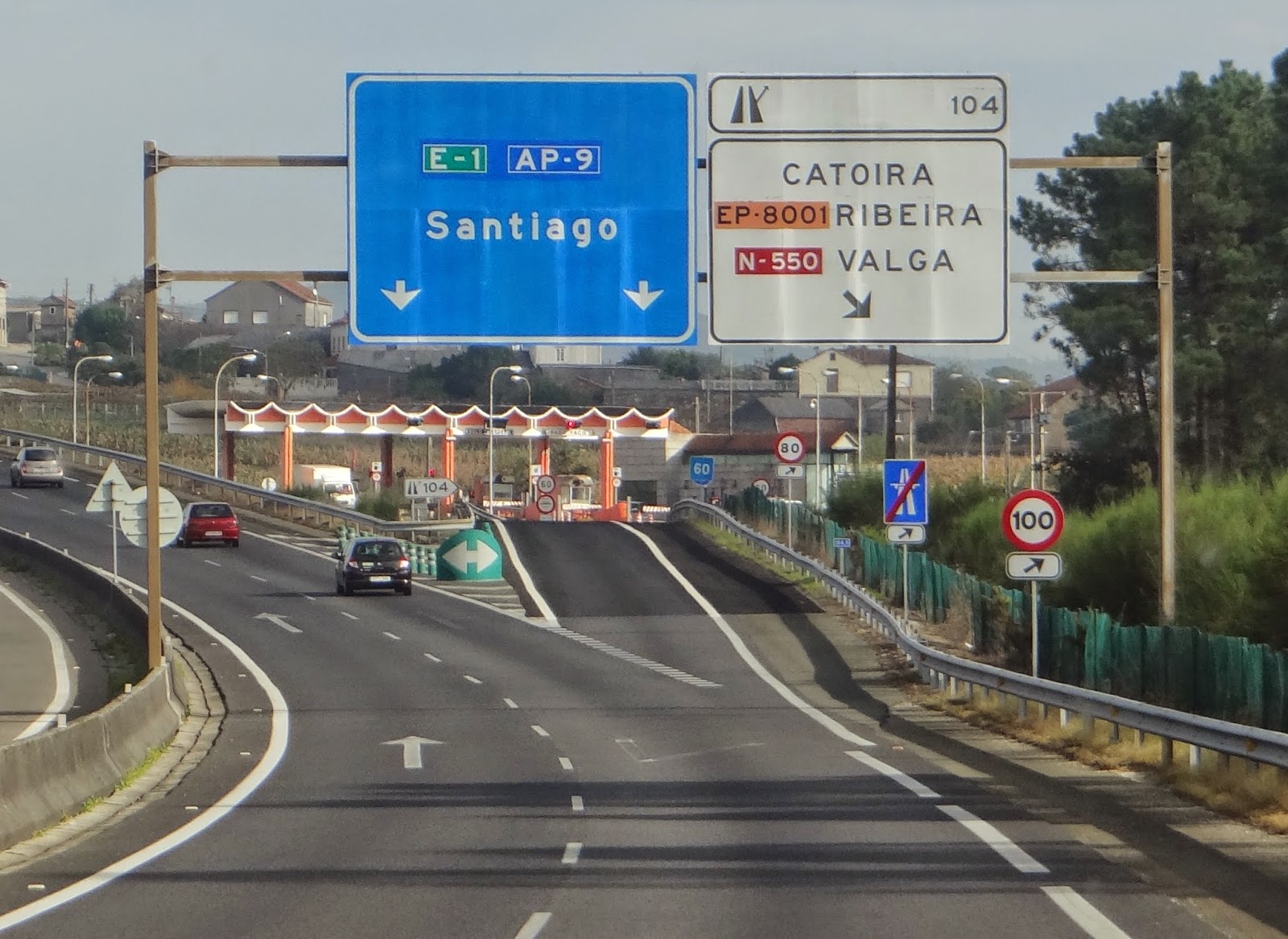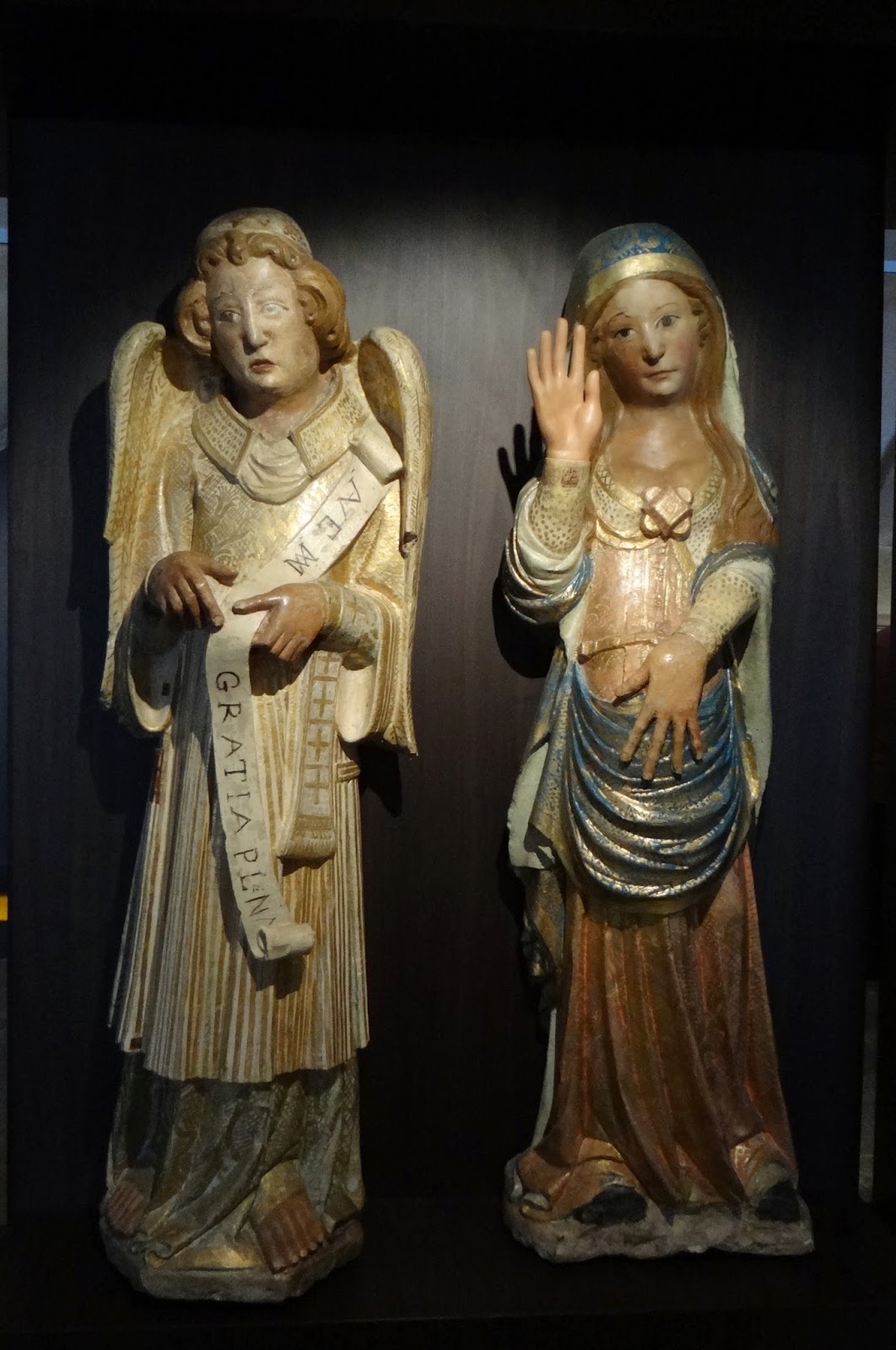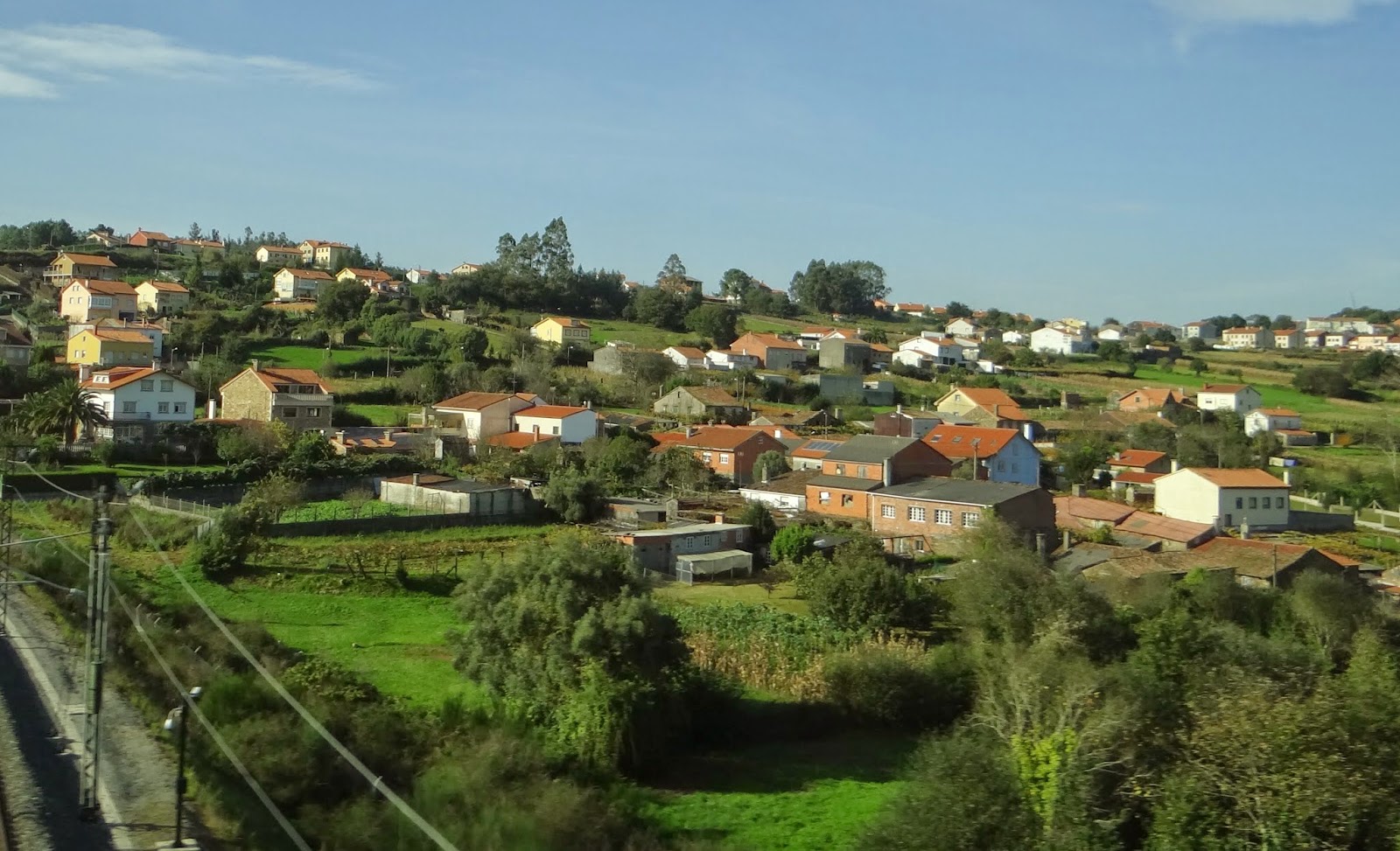We sailed into the port of Vigo, Spain early in the morning. Today we would be on a private tour, driving about one hour to Santiago de Compostela, the capital of Galacia. The northwest region of Spain is called Galacia, which had Celtic roots dating back to 600 BC. From 409 to 1833, Galacia was a country unto itself, until it was disbanded and made a part of Spain.
We met our guide, Ana, at the port. You can always breathe easier when you've organized a tour and you find the guide. Your work is done. We had a roomy 20 passenger van for our group of 12.
The "docks" in the water are aqua cultures farming shellfish.
Vigo is very pretty, but we didn't have any time to spend there as we headed straight for Santiago. With only 6 hours in port that day, and an hour each way to Santiago, there was no time to spare.
A nice marina...Vigo has a population of approximately 300,000 with another 180,000 in the areas around the city.
Santiago de Compostela owes its fame to one man (or saint)--St. James, one of Jesus's first disciples. He was beheaded in 44 AD and his remains were not discovered in Santiago until nearly 800 years after his death. Since that time, for nearly 1300 years, pilgrims have made their way to Santiago to pay their respects. It is one of the three chief sites of Christian pilgrimage, after Rome and Jerusalem. Each year, about 100,000 pilgrims make their way to Santiago.
(If you haven't see the movie, The Way, written and produced by Emilio Estevez, and starring his father, Martin Sheen, it's a good way to learn the story of the pilgrimage, the Camino de Santiago.)
We arrived in Santiago and left the bus to tour the pedestrian-only part of the city.
Once again, we were having the most incredible weather. Ana told us this week was their summer. They had terrible weather during the summer with lots of rain and cold temperatures.
This is a statue of St. Francis of Assisi with Christ on the cross behind him.
This church is the Convento de San Francisco. It was built in honour of St. Francis walking the Camino de Santiago.
The town hall in the square...a group of young guys wearing backpacks were jumping up and down and high fiving each other. We assumed they had completed the pilgrimage. If you do the complete walk of 800 km, it would take about a month walking 27 km a day.
This is what the cathedral looks like normally...
The first chapel was built in 810 AD on the site where St. James' remains were found. This was followed by a church in 829 AD, which was replaced by a larger church in 899 AD. This church was destroyed by the Moors in 997. Construction of the present cathedral was started in 1075 and completed in 1122. The cathedral was expanded in the 16th, 17th and 18th centuries.
And instead of the glorious cathedral pictured above, this is what we saw...such a shame, but not unusual. The maintenance required must be astronomical.
The cathedral has four facades, one for each direction that the pilgrims come from.We entered through these doors as the front entrance was obstructed by scaffolding.
When you enter the cathedral, the first thing the pilgrims do is place their hand on this column. 1300 years worth of this has resulted in 5 indentations from people's fingers, which you can see in the circled area. If you put your hands in the mouths of the lions, you are supposed to be healed of all aches and pains from the journey.
This is St. James sitting under Christ and the disciples. He is holding a walking stick and a scroll containing the words in Latin "the Lord sent me."
In the cathedral with the main altar at the front on the right.
Here you can see the incensory (Botafumeiro) hanging from the ceiling. In the early days (and maybe now as well), the pilgrims would be very smelly when they arrived, so they would use the incense to freshen the room.
The Botafumeiro ritual...
We admired this beautiful stained glass window of St. James as we waited in line for a chance to hug his statue.
And then we lined up to view the silver casket which is said to hold his remains...
We should have had an opportunity to kneel here and say a prayer; however, it was like a little assembly line that day.
Each of the bishops from the beginning of the church's existence has been buried in the cathedral. Every four years there is a new bishop and they are all buried here. Ana said they are running out of room...wow, no kidding. Some of the wealthier bishops' families have donated money for a chapel in their honour. Some of them were very elaborately decorated.
You can rent some of the chapels, like this larger one, for weddings.
Every pope has visited the cathedral, except for the current one, Pope Francis.
More of the private chapels...
We were back outside now at the east entrance to the cathedral.
It was time for a washroom break, which involved a fair walk down the ramp and along the narrow streets.
This building with the interesting figures on top was across from the washroom. There are many ornate buildings in Santiago.
Then we roamed the little side streets looking for food. We had tapas in a little restaurant, which I guess I was too busy to take a photo of.
A beautiful town, but we didn't have time to do it justice.
We also visited the museum, which was founded in 1930 to hold important archaeological finds, sculptures, paintings and precious metal works from the very early churches on the site.
These horses are from the original Romanesque church.
This is a scale model of the first stone choir built in 1188
And this is part of the reconstruction...
It was replaced by this wooden one in the 1600s.
This was over the door of a chapel from the mid 1300s called the Visit of the Magi.
A pregnant Mary with an angel...
Two of the original metal works from the early churches...
Mary with Jesus, similar to La Pieta...
The walkway around the cloister
The fountain in the centre of the cloister...
We don't look much like tourists, do we? Complete with headphones, cameras, and bags...it was nice that Ana had a microphone and we could hear her through the headphones. Dave and Pat; Wendy and Steve (all from the Toronto area); Jim and Kim; Jeff and Carol; Larry and Ed.
Our next stop was the monastery of St. Martin Pinario, which was also undergoing renovations.
Jim had already been in and back down to wait with Barb. There were lots of stairs and a rather bizarre art exhibition with TV screens showing people walking in circles. Very, very strange...I think Ana was a little taken aback by it as well.
Toilets of the original monastery, with a monitor above it. We were quite puzzled by the whole monastery.
All too soon it was time to go...
Almost every house has a little vineyard to make their own wine...
The aqua cultures...there must have been some colour on the van windows because I don't think it was really that dark!
Ana and me...
Ana nicely gave us two bottles of wine made in the region.
This was the marina across from the terminal. We got back quite close to sailing time, probably the closest we have cut it on a private tour.
The ship from the stern...
The Royal Caribbean Adventure of the Seas sailed out before us, with lots of singing, hooting and hollering.
People on the top decks...it sounded like they do a sail away from every port...
Back of the ship as we followed them out of port. It was a day with a lot of information to digest...
Tomorrow we will be in Lisbon...

























































No comments:
Post a Comment